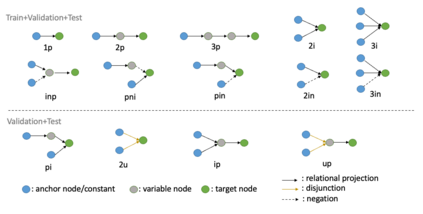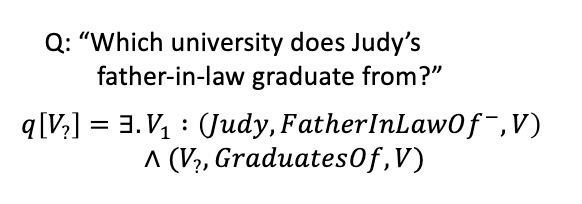Answering first-order logical (FOL) queries over knowledge graphs (KG) remains a challenging task mainly due to KG incompleteness. Query embedding approaches this problem by computing the low-dimensional vector representations of entities, relations, and logical queries. KGs exhibit relational patterns such as symmetry and composition and modeling the patterns can further enhance the performance of query embedding models. However, the role of such patterns in answering FOL queries by query embedding models has not been yet studied in the literature. In this paper, we fill in this research gap and empower FOL queries reasoning with pattern inference by introducing an inductive bias that allows for learning relation patterns. To this end, we develop a novel query embedding method, RoConE, that defines query regions as geometric cones and algebraic query operators by rotations in complex space. RoConE combines the advantages of Cone as a well-specified geometric representation for query embedding, and also the rotation operator as a powerful algebraic operation for pattern inference. Our experimental results on several benchmark datasets confirm the advantage of relational patterns for enhancing logical query answering task.
翻译:回答知识图谱上的一阶逻辑查询一直是一项具有挑战性的任务,主要原因在于知识图谱的不完备性。查询嵌入方法通过计算实体、关系和逻辑查询的低维向量表示来解决这个问题。知识图谱展现出对称性和组合等关系模式,建模这些模式可以进一步提高查询嵌入模型的性能。然而,关于这些模式如何在查询嵌入模型中对回答一阶逻辑查询任务发挥作用的问题尚未在文献中研究。在本文中,我们填补了这一研究空白,引入了一种归纳偏置,允许学习关系模式,从而增强一阶逻辑查询推理。为此,我们开发了一种新的查询嵌入方法RoConE,将查询区域定义为几何锥体,将代数查询运算符定义为复数空间中的旋转。RoConE结合了几何表示形式Cone的优点和作为关系模式推理强大代数运算符的旋转运算符。我们在多个基准数据集上的实验结果证实了这种关系模式增强逻辑查询回答任务的优势。








